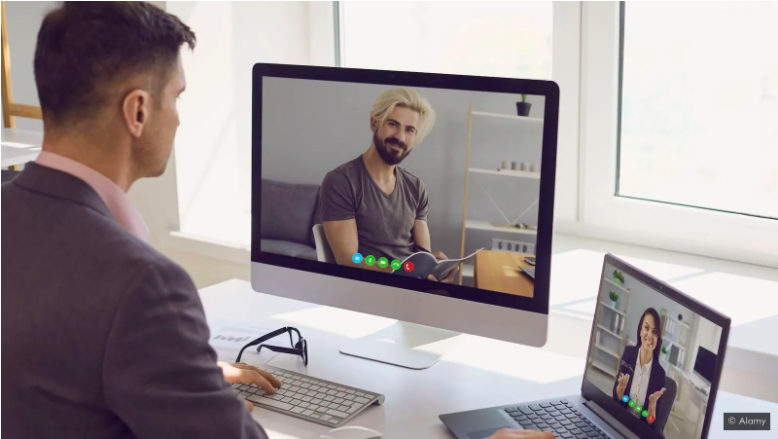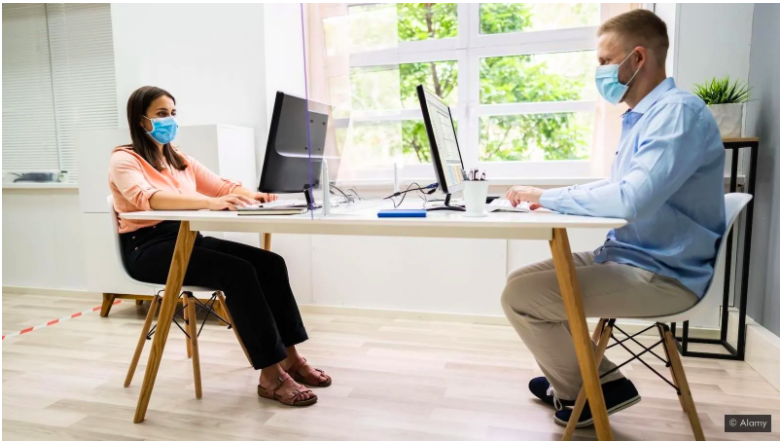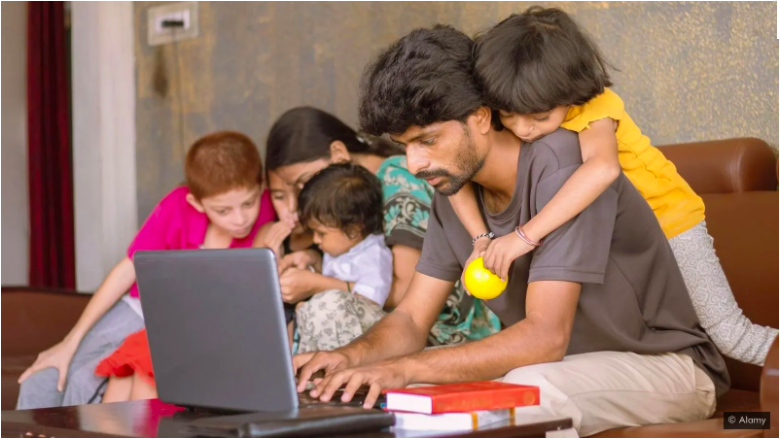未来的工作可能是现场/远程混合模式
By Christine Ro
Companies are looking to the post-Covid future. For many, the vision is a model that combines remote work and office time.
Since Covid-19 upended our lives, employees around the world have settled into the rhythms of mandatory remote work. Now, as companies try to decide the best way forward for their workers, it’s clear that many employees don’t want to stuff the genie entirely back into the bottle.
A survey in May showed that 55% of US workers want a mixture of home and office working. In the UK, employers expect the proportion of regular home workers to double, from 18% pre-pandemic to 37% post-pandemic. In China, employment expert Alicia Tung has predicted that in 10 years’ time, there will be a 60/40 split of onsite/remote work.
At the moment, companies are managing in varied ways. Some have given employees permission to continue working remotely until at least 2021. Others have recalled staff to the workplace on different schedules and in staggered groups. Still others are leaving it entirely up to individual workers to decide where to base themselves.

Even those physically in the office should take calls on their own devices, so everyone is communicating in the same way, advises researcher Anita Williams Woolley (Credit: Alamy)
What hybrid work might look like
While ‘hybrid’ is key to understanding the more flexible future of work, it encompasses many possible systems. Hybrid work tends to include more freedom around when to work as well as where. It generally grants more autonomy to employees to fit work around the rest of their lives, rather than structuring other parts of a weekday around hours logged in an office. Ideally, it’s the best of both worlds: structure and sociability on one hand, and independence and flexibility on the other.
A common procedure of existing hybrid companies, accelerated since the pandemic started, is to designate certain days for in-office meetings and collaboration, and remote days for work involving individual focus. Physical presence might be required for orientations, team-building and project kick-offs, but not necessarily for other work.
Some companies are going further. Kissflow, a provider of digital workplace services with offices in the US and India, has introduced a mixed working model called REMOTE+. This combines three weeks of working from anywhere with one week of office-based work. The company covers accommodation costs for the office week, and encourages employees to return home the rest of the time.
Ideally, hybrid work is the best of both worlds: structure and sociability, and independence and flexibility

Under a hybrid model, a head office could have a disproportionate share of power, and office regulars will have the edge over home workers (Credit: Alamy)
Nicholas Bloom, a Stanford University economics professor with expertise in remote work, believes that once the pandemic subsides, working from home two days a week will be optimal for balancing collaborative and quiet work, while benefitting from the reduced stress of less commuting. He suggests companies that want to retain their own space consider moving from tall buildings to spread-out industrial parks or campuses to facilitate social distancing.
The darker side of hybrid work
Of course, hybrid working patterns won’t suit everyone. In general, there’s enormous socioeconomic and racial inequality between who is able to work from home and who is not.
Sid Sijbrandij, CEO of web development platform GitLab, calls hybrid remote work “the worst of both worlds”
The pandemic has drawn attention to disparities among those allowed to work remotely, including the spotty quality of internet access; the demands of parenting and caring; and the luxury of roomy homes and outdoor space that make working from home comfortable. Those squashed into overcrowded flats may not relish having to work from home for the bulk of the week.
There’s also the question of personality. People who appreciate a fixed routine, for example, may find it difficult to ping back and forth between work settings. “I thought I’d be happy to go back, but I have to say that it’s difficult,” reflects Nelson Sherwin, a manager at PEO Companies, based in the US state of Nebraska, which advises on HR services. “I think the key is to just be consistent and you can pretty much adjust to anything – office or remote work. But when you do both, you don’t really get a chance to adjust to either. You’re in and out, never quite able to create a consistent routine.”
According to critics, a hybrid model may also have an in-built inclusion problem. Sid Sijbrandij, CEO of web development platform GitLab, calls hybrid remote work “the worst of both worlds”. GitLab has an entirely remote workforce; it pays for employees to rent office or coworking space should they want it, and to visit each other for work. Sijbrandij has argued that under a hybrid model, a head office will always have a disproportionate share of power, and office regulars will have the edge over home workers. If inadequately planned, this kind of structure would have neither the interaction of face-to-face work nor the egalitarianism that fully remote workforces can aspire to.

There are hidden inequalities in working from home, as workers with spotty internet or childcare duties may have a much harder time completing tasks (Credit: Alamy)
Organisational design researcher Minervini agrees, saying: “You run the risk of creating in-group and out-group dynamics in hybrid teams.” In other words, a mixed model can entrench a divide between those in the office and those at home (and potentially magnify the gender gap, as women are disproportionately expected to take on home-based caring responsibilities). “And there’s consistent evidence to show that in-group and out-group dynamics reduce collaboration and increase conflict.”
Partially distributed teams also commonly report communication problems. Conflict is more likely with digital communication, partly because social inhibitions are more powerful when working face-to-face. And the lack of shared social identity that is more common in partially distributed teams can harm team effectiveness and performance, by impairing trust and team spirit.
How to make hybrids helpful rather than harmful
Worry over the unintentional exclusion of remote workers is behind one of Minervini’s key suggestions: aim towards equalisation. Ideally all workers would be in the office on the same days, although this may be impractical for socially distanced offices. Leaders should be in the same boat as employees, to whatever extent possible, with roughly equal face time. Further, leaders should be aware of the harms of in-group dynamics.
Transparent communication is also critical. Woolley advises partially distributed companies to have group meetings in a completely distributed way, everyone on their own device. “That way everyone can be seen and heard, so you don’t have the distant conference table with the fuzzy faces,” she explains. “It cuts down on the side conversations, and it forces all of the communication to be much more explicit.”
An efficient hybrid workplace shouldn’t demand that everyone works the same hours, at the same pace
But more clarity and consistency around procedures is important to avoid conflict.
It also helps foster more empowered employees, which leads into Minervini’s final suggestion for optimising hybrid work: modularisation. This involves dividing up work into tasks that employees can complete independently and make decisions on quickly, without requiring colleagues to be online simultaneously. “You need to break the temporal chain of synchronicity,” urges Minervini. In other words, an efficient hybrid workplace shouldn’t demand that everyone works the same hours, at the same pace, though occasionally this is necessary. A mix of synchronous and asynchronous communication methods helps geographically-distant teams work best.
Ultimately, Woolley is optimistic about the future. Even before Covid-19, she believed that organisations needed to rethink practices that were conventional but not efficient, like taking a flight for a two-hour meeting. “It just takes a little creativity and comfort, getting used to a new way of doing things. And so for me the silver lining in the pandemic is that it has forced organisations to find ways to do that. And I really hope they never go back, because for people’s wellbeing, work-life balance, etc., it just really is better to have this kind of flexibility.”